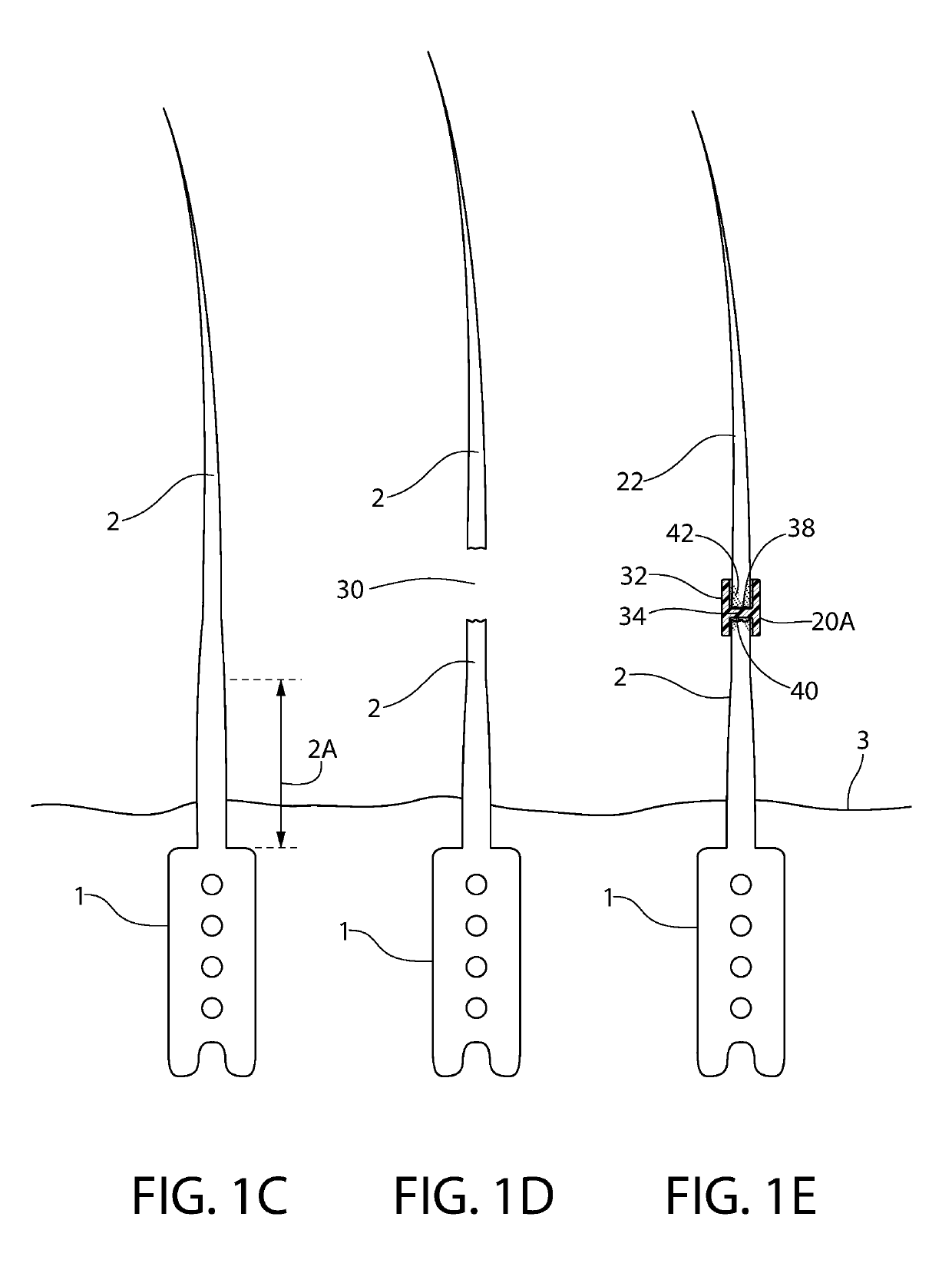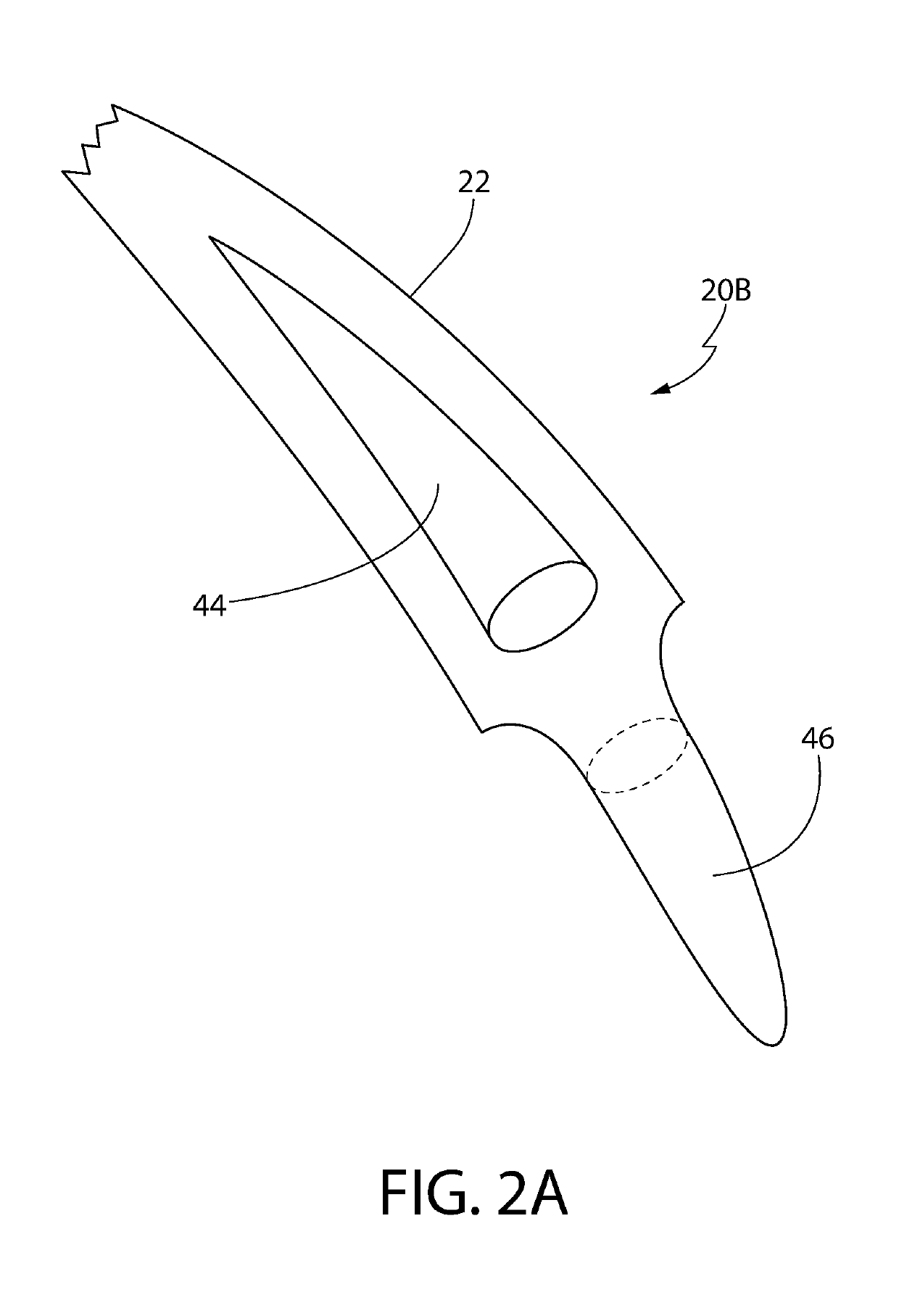Extension apparatus for artificial hair implants
a technology of extension apparatus and artificial hair, which is applied in the field of hair replacement, can solve the problems of difficult styling of artificial hair, shortening hair or hair loss, and difficulty in securing artificial hair, and achieves the effect of minimal or no side effects and without excessive strain on the implant anchorag
- Summary
- Abstract
- Description
- Claims
- Application Information
AI Technical Summary
Benefits of technology
Problems solved by technology
Method used
Image
Examples
Embodiment Construction
[0047]The goal of adding artificial hair elements to the body is to achieve a natural appearance with minimal to no side effects. Observing the natural form of existing living hair follicles and their anatomy has provided valuable information regarding desirable structural and functional elements of artificial hair implant extension materials, design, and attachment technique.
[0048]Natural hair visibly appears exiting from the skin from the deeper dermal layer. This is a very important observation (9,10). If one examines traditional hair weaves, hair extensions, or similar hair systems, the hair exits from above the skin and often looks unnatural when it does not match the natural hair color or hair density patterns that are found with natural hair growth on the sides and back of the scalp. Upon close inspection of these hair systems, it is possible to see the artificial substrate to which the hair is anchored. In addition, the hair system requires some type of mechanism for anchori...
PUM
 Login to View More
Login to View More Abstract
Description
Claims
Application Information
 Login to View More
Login to View More - R&D
- Intellectual Property
- Life Sciences
- Materials
- Tech Scout
- Unparalleled Data Quality
- Higher Quality Content
- 60% Fewer Hallucinations
Browse by: Latest US Patents, China's latest patents, Technical Efficacy Thesaurus, Application Domain, Technology Topic, Popular Technical Reports.
© 2025 PatSnap. All rights reserved.Legal|Privacy policy|Modern Slavery Act Transparency Statement|Sitemap|About US| Contact US: help@patsnap.com



